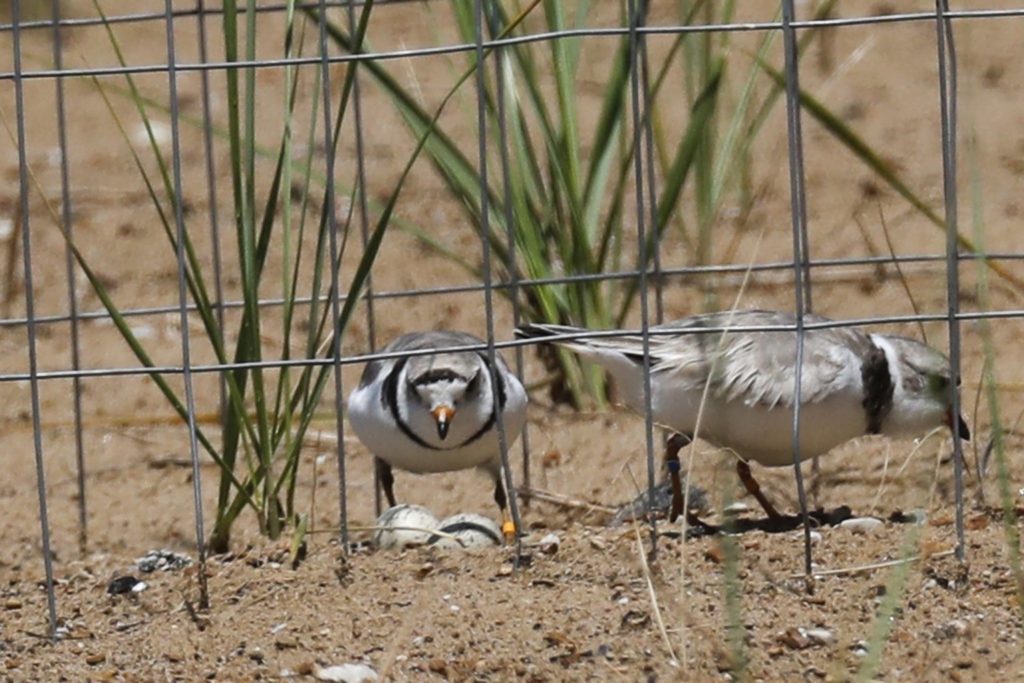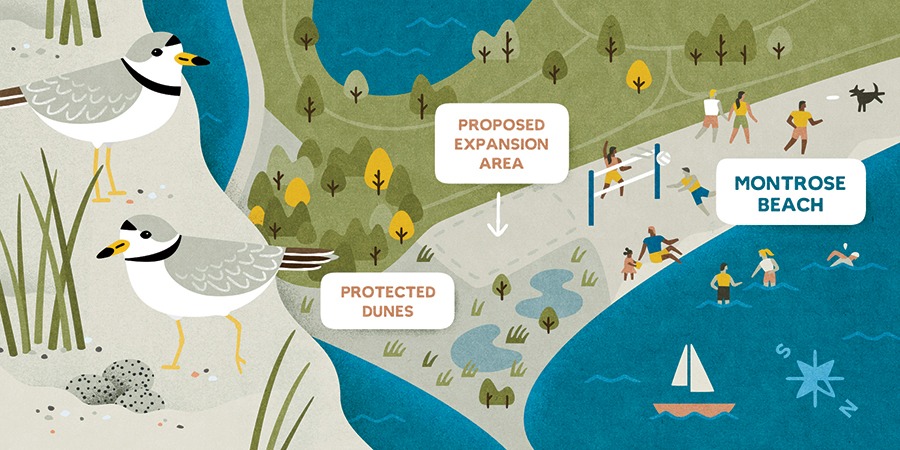The Setting
Montrose Beach: land of volleyball, off-leash dogs, and a small mound that, by Chicago standards, qualifies as a mountain. It’s also home to the Montrose Point Bird Sanctuary, a 15-acre reserve that welcomes more than 300 avian species a year. A particularly diverse notch is nicknamed the Magic Hedge, which sounds like the title of an as-yet-unproduced Pixar film.
Next to the sanctuary are the Montrose Beach Dunes Natural Area, which include a rare type of wetland habitat, called a panne, found only in the Great Lakes region. In 2001, the Chicago Park District stopped clearing these dunes for recreation, and native plants, insects, and birds (killed off by European settlers) returned to the Cook County shoreline.
The Key Players
• Monty and Rose One of roughly 70 pairs of Great Lakes piping plovers left on the planet. The planet! Just shy of two years ago, they nested at Montrose Beach — the first piping plovers to nest in Chicago since 1955. Name a more iconic duo, we’ll wait.
• Chicago Park District The agency that runs the city’s recreational spaces, including parks (obviously), pools, field houses, two botanical conservatories, Lincoln Park Zoo, and, yes, Montrose Beach. They also employed the cast of The Real World: Chicago back in 2001.
• Conservationists You know, the die-hard environmentalists every first grader thinks they’ll grow up to be. This includes Leslie Borns, longtime nature enthusiast and birdwatcher.

The Predicament
Monty and Rose have nested (and raised chicks!) at Montrose Beach for two summers now. Given how endangered plovers are, this is a huge deal to naturalists. So huge that their presence (in part) prompted the cancellation of the music festival Mamby on the Beach in 2019. (Crazy how North Siders became ornithology advocates just as a two-day concert moved to their patch of lakefront, right?) And the 2020 beach closures meant Monty and Rose could really live it up, human-free.
But in normal times, their foraging area is a popular spot for volleyball, merrymaking, etc. Birders worry increased human presence will keep Monty and Rose away or, worse, pose a threat to their oh-so-precious chicks.
The Proposal
Add an acre of foraging beach onto the Montrose Beach Dunes Natural Area. This year, conservationists hope to formalize the habitat — ideally encouraging more plovers to nest at Montrose in the years to come. Last summer, Borns submitted a proposal to expand the dunes, which wouldn’t ban people from the area, just from playing sports there.
Park officials maintain they’re reviewing the expansion request and are “fully committed to protecting the plovers.” And it’s true, the Montrose Beach Dunes Natural Area was expanded in 2011 and 2015 — there’s a chance the park district will be like, “Hey, birds, enough’s enough, enjoy your generous acreage.” There’s no timeline for when a decision will be made.
The Stakes
Once upon a time, 500 to 800 pairs of plovers nested on Great Lakes shores. Then we started hunting them for their feathers — for hats — and destroyed natural habitats to make recreational beach space. By the ’80s, there were only around 13 pairs of Great Lakes plovers left total. Not only are Monty and Rose precious little creatures, but they’re powerful, too, as they’ve got the Endangered Species Act on their side.
Oh, and another thing: Lake Michigan water levels are rising. That’s bad news for the park district and the plovers alike, as recreational and nesting space are both limited. Is the city willing to give up an acre of its dwindling volleyball beach for two birds who can’t even vote? Birdwatchers will be watching.




Comments are closed.